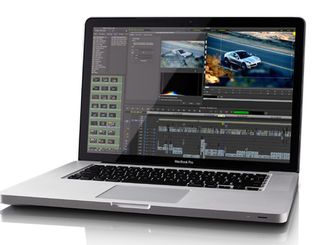Cloud Tech Shows Its Silver Lining

Related: New Cultures For New Technologies
In recent months, the growing interest in IP-based infrastructures has also accelerated demand for cloud-based technologies. This is particularly evident in the demand for cloud-based encoding and content preparation systems for TV Everywhere offerings and in the use of cloud-based systems for editing, live streaming and production. But it can also be seen in rapid development of these technologies for playout, centralized graphics hubs and media asset management.
Cloud technologies generally rely heavily on software running less expensive IT equipment based in a data center outside the broadcast facility.
“The unrelenting pressure for operational efficiencies, better collaboration between different people in different locations and using the cloud to better tie together the media lifecycle from content creation to distribution are the big drivers,” says Dana Ruzicka, VP of segment and product marketing at Avid, which has launched cloud-based offerings for its Media Central editing systems and other technologies. “We’re looking to offer solutions for the entire media cycle, and cloud deployment is a very important part of that.”
One particularly promising area is playout, notes Michael Cronk, senior VP of strategic marketing at Grass Valley, distributor of Grass Valley Stratus Playout. “If you want to spin up a new service, you can do this very quickly in the cloud without having to build a new facility. And you only pay for the services you are actually running,” he says. “The time and cost of doing that is dramatically less than doing a bricks-and-mortar setup.”
“On the playout side, a number of our customers are adding new channel capacity and looking at doing that natively in IP with a cloud-based approach,” adds Steve Reynolds, CTO at Imagine Communications, which has made cloud-based solutions a centerpiece of their strategy for developing new broadcast and video technologies.
Tom Lattie VP of product management at Harmonic, explains that products like their virtualized media processing platform VOS “go hand-in-hand with the migration to IP. You wouldn’t be able to do this without the transition to IP workflows.”
Broadcasting & Cable Newsletter
The smarter way to stay on top of broadcasting and cable industry. Sign up below
The Cloud Delivers for Consumers
These cloud-based video processing solutions are particularly attractive in the digital delivery of video to consumers. “Multiplatform delivery is the biggest challenge facing broadcasters today,” Lattie says. “Preparing and processing that content has to be done in a very economical way, which is possible in the cloud.”
For many, such efforts are also the entry points for launching their first cloud services. “As the TV Everywhere experience has become more important, as opposed to just the TV experience, IP- and cloud-based solutions have become more important,” says Yvette Kanouff, senior VP and GM of the service provider video software and solutions group at Cisco Systems.
Keith Wymbs, CMO of Elemental Technologies, also argues that cloud-based deployments are becoming much more common. “The market goes through the traditional stages of adoption where you have early adopters, and we have now gone beyond that into the early majority stage,” he says, noting that their software-based encoding and content preparation systems are increasingly being used in cloud-based environments by clients including Comcast. “It has real economic benefits to handle the complexity and the spikes in demand.”
Steve Owen, marketing director at Quantel, sees similar demand for playout. “We are talking to a lot of customers about data center [or cloud] deployments,” he says.
Over time, this promises to provide the industry added flexibility in launching new services and respond for quickly to market demand. “It allows companies to be much more entrepreneurial because the risks are less, and they don’t have to spend millions of dollars on bespoke equipment,” says Lattie.
“In a way, the technology is the least interesting bit,” says Bruce Devlin, chief media scientist at Dalet. “The way this will allow the business to change is the interesting thing to watch.”
But companies do need to carefully consider costs and the type of service they hope to provide. “It’s a little like renting a car,” Wymbs says. “If you are going to be using it heavily every day, the cloud may not pay off as well as buying or leasing.”
